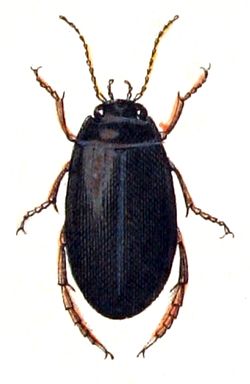| Meladema coriacea | |
|---|---|
 | |
| Meladema coriacea. Museum specimen | |
| Scientific classification | |
| Domain: | Eukaryota |
| Kingdom: | Animalia |
| Phylum: | Arthropoda |
| Class: | Insecta |
| Order: | Coleoptera |
| Suborder: | Adephaga |
| Family: | Dytiscidae |
| Genus: | Meladema |
| Species: | M. coriacea |
| Binomial name | |
| Meladema coriacea Laporte, 1835 | |
Meladema coriacea is a species of beetles belonging to the family Dytiscidae.
